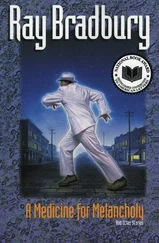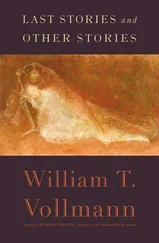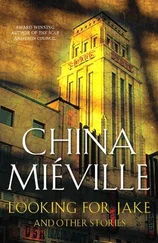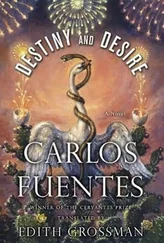I made my way through the chill morning mist, through the crowd, people with wool jackets slung over their shoulders, with mufflers around their necks, their hands joined amid the hustle, barring the way to the hut. I am Vélez the architect, it’s urgent, let me through, let me through. I couldn’t get anywhere and I heard a noise that I found unendurable, almost unspeakable. If I closed my eyes, everything disappeared except that intolerable murmur of the unspeakable: I wanted to identify it, and I pushed my way toward the door of the hut. Sighs. Moans. Wails. A solemn hum came from the watchman’s shack, but that high-pitched sadness disguised a celebration. Dressed in black, clasping her hands in prayer one moment, making the Sign of the Cross the next, tears rolling down her cheeks like oil on a burnt tortilla, Doña Heredad Mateos was kneeling before the window of the shack, hissing through her wrinkled lips:
— A miracle, a miracle, a miracle!
Behind her, on the cot, I saw Catarina Ferguson’s wedding dress, lying inert, held together with pins, ready to pass into new hands, to dress a young bride, ignorant of the marvelous woman who had filled it once and then forgot it, who, perhaps, gave it to a friend, the friend to a poor relative, she to her servant. And next to Señora Mateos, I could make out a form in the glass that had recently been put into the window; it was as fuzzy as an out-of-focus photograph, vague but three-dimensional, like a holograph, and, obsessed with the bride’s gown on the cot, I could not really say what it was; but she, Doña Heredad, proclaimed it:
— The Virgin and the Child! Reunited at last! Praise be to God! A miracle, a miracle, a miracle!
6
You wanted to speak to them and you stepped forward to say something, to call out, to ask them … The bells rang and the woman and child hurried on, without looking at you. The child smoothed his curly hair and white tunic, the woman threw a heavy cloak over her shoulders and with nervous, awkward fingers arranged a white cowl on her head, leaving the ends loose under her chin.
The child took the woman’s hand and held it as the sound of the bells swelled. They opened a door and went into a colonial patio, another negation — you notice at once — of the previous styles, Neoclassical, Art Nouveau. Now the colonnades supported four arched porticoes, and chest-high screens that allowed — allowed you —to observe the woman’s anxious arrival, holding the child’s hand, at the center of the bare patio — it had neither garden nor fountain, only implacably naked stones — and to see the pair join the women who were walking there, together in the rain, protected by their umbrellas, walking in circles, Indian-file, one behind the other, one of them lightly touching the shoulder of the woman in front of her from time to time: but the woman with the child, not protected by an umbrella, seemed to be looking for something, as the ends of her cowl whipped against her cheeks, and the child, who was holding her hand, let the rain wet his face and mat down his blond curls, his eyes closed, wearing a grimace that was half gleeful and half perverse.
They all walk like that — the nine women and the child — in circles, in the rain, for more than an hour, not acknowledging your presence, but not asking you to leave, as you feared they might at first — one of the women, in a straw hat and pink brocade dress, even approaches you and touches your hand, though without looking at you — and the others, also without looking at you, make a huge clamor as soon as she touches you. You try to distinguish between their laughter, exclamations, bawls, groans, sobs, complaints, moans, exultations, but, unable to, you turn your attention to what those figures in the rain are looking at and what each is carrying in the hand that doesn’t hold an umbrella. They give you an oppressive sensation of dynamic abulia, a paradox, but it seems to describe them because they don’t take a single step that isn’t slow and solemn, and there isn’t a single one of their gestures that isn’t deliberate. In one hand, each holds an umbrella; in the other, they carry various objects, shielding them from the rain. The first a basket and the second a shepherd’s staff. The third a bag full of teeth and the fourth a tray holding bread that’s been sliced in two. The fifth wears bells on her fingers and the sixth has a chameleon clasped in her fist. The seventh holds a guitar and the eighth a sprig of flowers. Only the ninth woman does not hold an object — instead, she holds the hand of the drenched child with his eyes closed.
They all wear cloaks draped over their shoulders like shadows.
Suddenly, unexpectedly, the woman with the shepherd’s staff raises it and dashes it against your hands; you cry out; they, too, cry, and you drop the frog that you had been holding in your fist. They laugh, flee, the patio is a confusion of umbrellas and water splashing, and the bread falls, and the teeth roll in the puddles, chattering madly, and the dog with the wounded rump, which had been watching them silently, now lets loose a howl, takes the frog in its muzzle and runs toward the convent.
7
They said they couldn’t see anything from the outside, it was just an old lady’s craziness, seamstresses get too wrapped up in themselves, they’re alone too much, with nothing but their thoughts, pretty soon they end up needing glasses, why should anybody believe her? And she answers that they should go in one by one, or two together, and then they will see what she saw on the windowpane in her bedroom. He saw what he had been afraid of, just what he had been trying to avoid, publicity, idle gossip — and the worst thing was that the people who were gathered around the shack wanted to believe, they were hoping that this would turn out to be a true miracle, that they would be the witnesses who would tell everybody else about it, since the worst thing about miracles was the way, after you saw them, you had to tell somebody else about them for them to be believed, and it was the same thing here at the shack of Doña Heredad Mateos, mother of Jerónimo the watchman of the same last name, where from outside you couldn’t see anything, and if you went into the little space you could see the señora was telling the truth. When you looked at the glass, the figures stood out clearly, so close together they were like one, the Virgin with the Child in her arms, a recognizable silhouette, the Madonna and the Child who was conceived without sin, with halos around them as white as snow: it’s splendid, if a little blurry, but you can’t see it from outside, you understand? only from in here. You have to go in one at a time, or by twos, that would be better, by twos so there won’t be malicious talk, you can see it only in here, in the shack where, as luck would have it, Señora Heredad Mateos was staying, the one who set out the orange votive lights and the images of the Virgin in the back, the one who brought all these precious bridal gowns, which, if it’s proper to think such a thing, are the dresses of the wife of heaven, Holy Mary full of grace, who conceived without sin.
— They’re going to ruin the dresses, he said to her.
— We never know how the Lady will choose to come to us.
— It’s dangerous, let me take care of them …
— Here they stay. Otherwise, what will the Virgin wear, tell me that…?
— I swear that as soon as this is over you’ll get them back.
— Praised be the Lord, who sent His wife and His Son here, where they could receive lodging and even clothing, a thousand times praise the Lord!
Doña Heredad Mateos gave me (José María Vélez) a look with her eyes of hot chile, her tortilla face marked by pocks of corn.
— And you know, the Son of God is a most venerable Child.
Читать дальше












